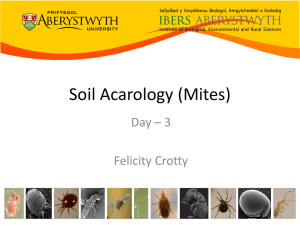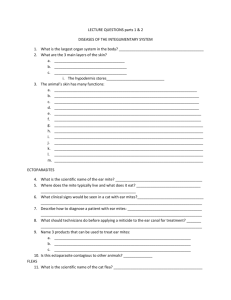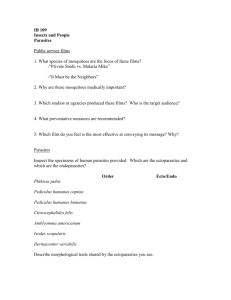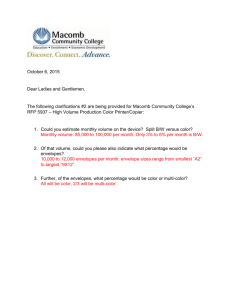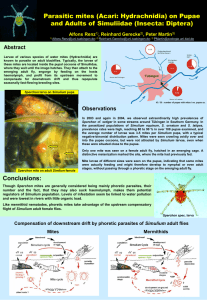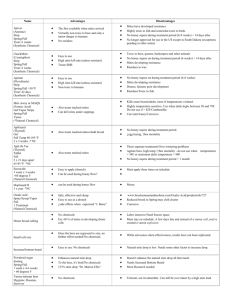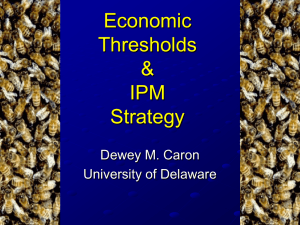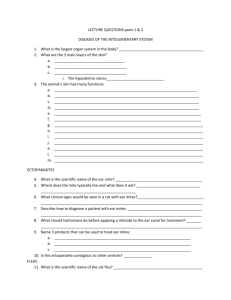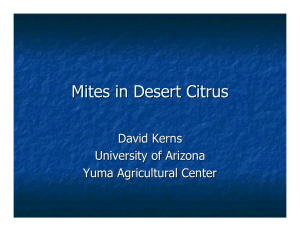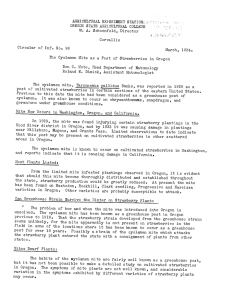Protocol for fieldwork
advertisement
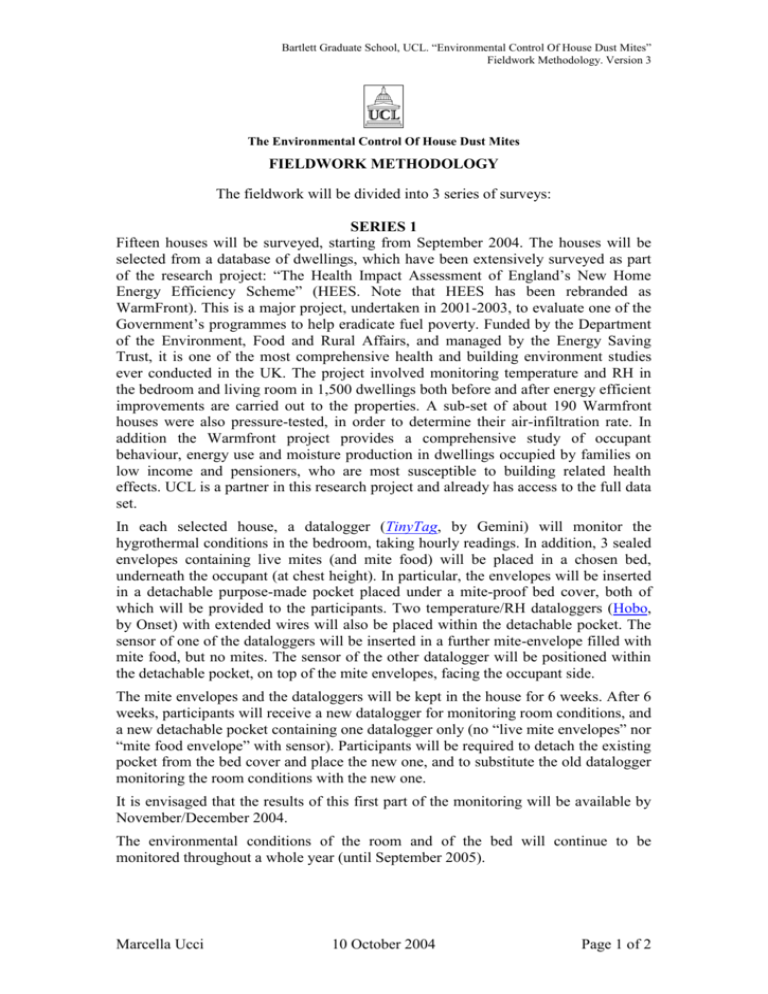
Bartlett Graduate School, UCL. “Environmental Control Of House Dust Mites” Fieldwork Methodology. Version 3 The Environmental Control Of House Dust Mites FIELDWORK METHODOLOGY The fieldwork will be divided into 3 series of surveys: SERIES 1 Fifteen houses will be surveyed, starting from September 2004. The houses will be selected from a database of dwellings, which have been extensively surveyed as part of the research project: “The Health Impact Assessment of England’s New Home Energy Efficiency Scheme” (HEES. Note that HEES has been rebranded as WarmFront). This is a major project, undertaken in 2001-2003, to evaluate one of the Government’s programmes to help eradicate fuel poverty. Funded by the Department of the Environment, Food and Rural Affairs, and managed by the Energy Saving Trust, it is one of the most comprehensive health and building environment studies ever conducted in the UK. The project involved monitoring temperature and RH in the bedroom and living room in 1,500 dwellings both before and after energy efficient improvements are carried out to the properties. A sub-set of about 190 Warmfront houses were also pressure-tested, in order to determine their air-infiltration rate. In addition the Warmfront project provides a comprehensive study of occupant behaviour, energy use and moisture production in dwellings occupied by families on low income and pensioners, who are most susceptible to building related health effects. UCL is a partner in this research project and already has access to the full data set. In each selected house, a datalogger (TinyTag, by Gemini) will monitor the hygrothermal conditions in the bedroom, taking hourly readings. In addition, 3 sealed envelopes containing live mites (and mite food) will be placed in a chosen bed, underneath the occupant (at chest height). In particular, the envelopes will be inserted in a detachable purpose-made pocket placed under a mite-proof bed cover, both of which will be provided to the participants. Two temperature/RH dataloggers (Hobo, by Onset) with extended wires will also be placed within the detachable pocket. The sensor of one of the dataloggers will be inserted in a further mite-envelope filled with mite food, but no mites. The sensor of the other datalogger will be positioned within the detachable pocket, on top of the mite envelopes, facing the occupant side. The mite envelopes and the dataloggers will be kept in the house for 6 weeks. After 6 weeks, participants will receive a new datalogger for monitoring room conditions, and a new detachable pocket containing one datalogger only (no “live mite envelopes” nor “mite food envelope” with sensor). Participants will be required to detach the existing pocket from the bed cover and place the new one, and to substitute the old datalogger monitoring the room conditions with the new one. It is envisaged that the results of this first part of the monitoring will be available by November/December 2004. The environmental conditions of the room and of the bed will continue to be monitored throughout a whole year (until September 2005). Marcella Ucci 10 October 2004 Page 1 of 2 Bartlett Graduate School, UCL. “Environmental Control Of House Dust Mites” Fieldwork Methodology. Version 3 Before installing the mite envelopes, sampling of mite allergen levels will be also carried out in each house during the first visit. Four different samples will be taken overall from the mattress and the carpet: 1 m2 of mattress will be vacuumed with a standard vacuum cleaner (at least 1000 W) for 2 minutes, for allergen levels measurement. A dust collector will be used for this purpose. 1 m2 of the mattress (different area than the one vacuumed with standard vacuum cleaner) will be vacuumed for 30 seconds with the Mite-Alert device developed by Acaris (http://www.activallergy.com/pages/our_products/1/index.html). 1 m2 of the carpet on the sides of the bed will be vacuumed with a standard vacuum cleaner. A dust collector will be used for this purpose. 1 m2 of the carpet on the sides of the bed (different area than the one vacuumed with standard vacuum cleaner) will be vacuumed for 30 seconds with the MiteAlert device developed by Acaris. The dust samples will be frozen and then tested for mite allergen levels by Acaris. During the first visit, a brief bed/house survey will be conducted and a questionnaire will be administered (to establish ventilation habits, sleeping habits, etc.). (See also the Participants Information Sheet for Series 1). SERIES 2 A further 15 houses from the Warmfront database will be selected for a 6 weeks monitoring study, starting approximately one year after Series 1. In these houses, the same protocol as in Series 1 applies, although the overall monitoring will be restricted to 6 weeks only. Ideally, the study of these new houses should aim to monitor August and September conditions, which from the modelling exercise appear the months with the most mite growth. SERIES 3 A further 6 houses (belonging to members of the research team) will be surveyed and pressure-tested. In these houses, dust samples will be taken in a similar manner to Series 1. However, in each “Series 3 house” a mattress will be selected where multiple Temperature/RH dataloggers and mite envelopes will be placed within different locations and depths of the bed. Air temperature and humidity will also be monitored in the selected bedroom. Series 3 will start in January 2004 and last for 1 year. A pilot study for Series 3 is due to start in November 2004. Marcella Ucci 10 October 2004 Page 2 of 2

